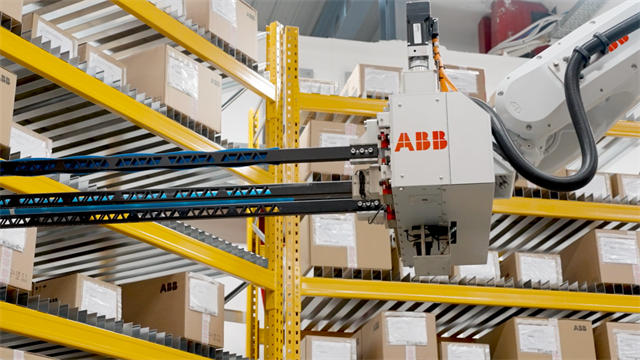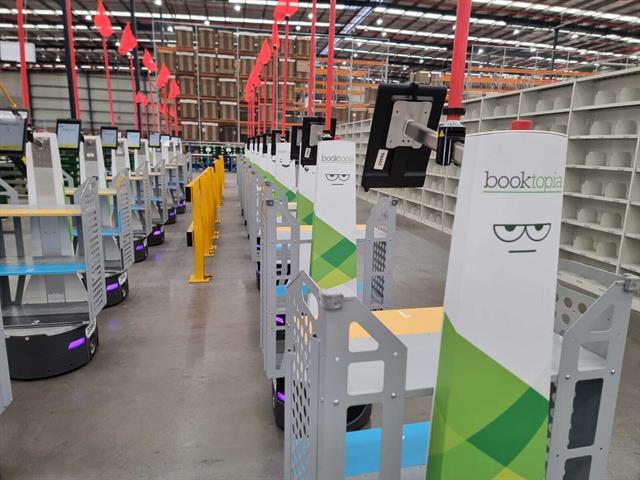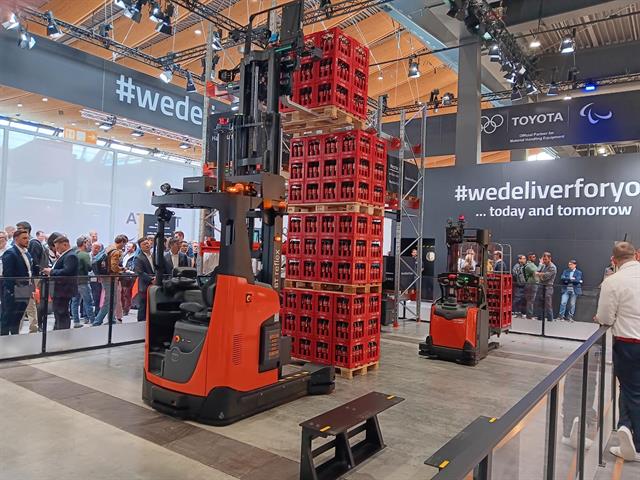 Automated storage and retrieval systems (AS/RS) are now an option for warehousesShawn Heidlebaugh is the automation sales manager at Concentric, the first American industrial power services and maintenance organisation delivering a dedicated technician model with uninterrupted sustainable facility power and equipment electrification.
Automated storage and retrieval systems (AS/RS) are now an option for warehousesShawn Heidlebaugh is the automation sales manager at Concentric, the first American industrial power services and maintenance organisation delivering a dedicated technician model with uninterrupted sustainable facility power and equipment electrification.
A team member spent the late 1970s working at a global shipping and logistics company climbing into trailers to manage 15 ft. (4.6 m) tall walls of packages and manually sorting items at breakneck speed.
This was his first introduction to the world of logistics and facility management and as he gained time and experience, he saw firsthand the changes this industry has experienced over the last four decades.
The human body was not built to unload 1,400 packages an hour, consistently, without causing permanent damage to joints and backs.
Early career in his career, it was common to complete this work manually but today we have conveyance devices to assist with the job.
In recent years, facilities have begun introducing robotic unloading devices to further reduce the risk to human employees.
When it comes to loading trailers, we now have belted or roller loading devices.
The introduction of flow control sorting enabled work at a more comfortable rate with consistent speed and less risk of packages getting jammed or needing manual removal in such a fast-paced environment.
Today’s innovation in robotics, automation and self-guided vehicles are expected to significantly reduce the wear and tear on human bodies even further.
 Automated mobile robots (AMRs) can free up human workers for other tasks
Automated mobile robots (AMRs) can free up human workers for other tasks
From greater awareness regarding safety issues to regulatory compliance, the industry has seen a radical shift in how it thinks about safety.
It’s clear that improved technology is a key driver in improving employee safety across industries and facility types and automation is the next step in further limiting the risk of musculoskeletal injuries, hearing loss, heat exhaustion and fatigue for employees.
Let’s look at how automation is helping safeguard operations at facilities right now:
- Automation removes human employees from dangerous situations and reduces the risk in hazardous jobs. This can be as simple as replacing the need for humans to do repetitive tasks that cause strain on the body or remove them from hazardous environments like freezers or those with a risk of chemical exposure. Narrow aisles, high-reach areas or forklift paths are all great places to introduce automation and reduce that human risk.
- Human error is real and automation ensures less of it. Part of being a human is the reality of occasionally making mistakes, getting distracted or experiencing fatigue. This is when employees are most prone to injury and automation means they are less likely to be in a hazardous situation when these realities occur. By freeing up that time and mental space, employees can focus on increasing their skills toward more thought-provoking jobs like process improvement or customer service.
- Automation creates enhanced visibility and control. Alerts and notifications can be sent to warehouse managers and workers, allowing them to take immediate action to reduce risks and prevent accidents. Automation can also enhance the effectiveness of PPE by using smart sensors and communication capabilities within the WMS error log system.
- Automation enables predictive maintenance strategies using data analytics to forecast equipment failures before they occur. This proactive approach minimises downtime, reduces maintenance costs and supports safety.
- Remote monitoring systems and diagnostics enable quicker identification of issues, facilitating timely interventions and repairs. Technicians can further assess equipment status from a safe distance, minimizing exposure to potential hazards.
 Automated guided vehicles (AGVs), such as driverless forklifts, also remove the human element
Automated guided vehicles (AGVs), such as driverless forklifts, also remove the human element
Investing in workplace safety and fostering a safety-first culture has become vital for businesses and their facilities.
From protecting workers to reputation to maintaining operations and reducing risk, safety is both a moral imperative and a strategic business decision.
Automation can provide facilities with a significant edge when it comes to safety, creating better workplace environments for their employees and their stakeholders.
While automation requires specialised training and skills to troubleshoot and repair systems effectively, that cost becomes negligible in the face of the reduced risk of injury and increased satisfaction from employees.